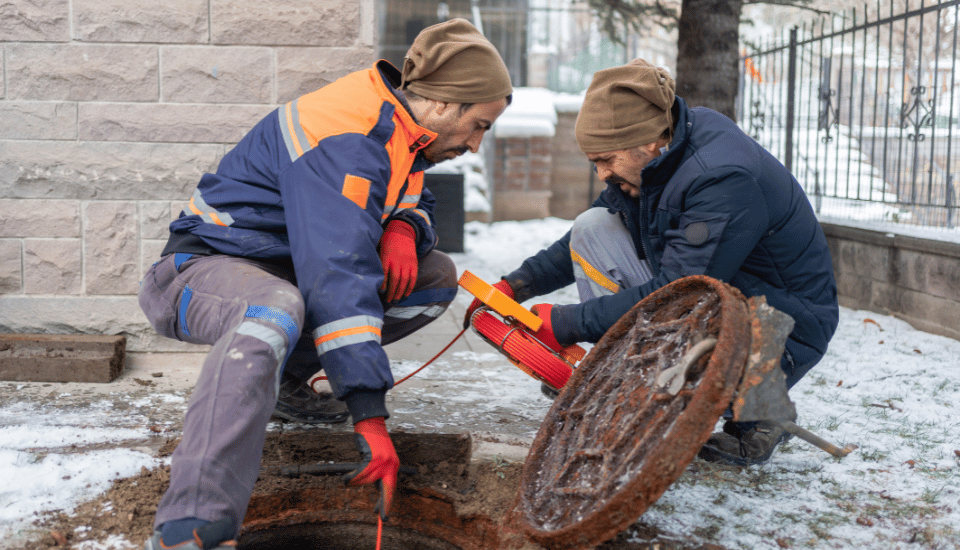When we think about environmental pollution, our minds often gravitate towards visible sources such as industrial emissions or plastic waste in our oceans. However, there is a hidden culprit lurking beneath our cities that contributes significantly to environmental degradation – sewer and storm drains. These essential components of urban infrastructure require regular maintenance and cleaning to prevent clogs and ensure the proper flow of wastewater. But have you ever stopped to consider the environmental impact of these cleaning practices?
The Need for Regular Maintenance
Sewer and storm drains play a crucial role in managing urban wastewater and stormwater runoff. They are designed to collect and transport water and waste materials away from our homes and streets, ultimately directing them to treatment facilities. However, over time, these drains can become clogged with debris, sediment, and other materials, hindering their functionality.
To maintain the proper flow and prevent potential flooding or backups, regular cleaning and maintenance of sewer and storm drains are essential. However, the methods employed to clean these drains can have unintended consequences on the environment.
Traditional Cleaning Methods: A Cause for Concern
Historically, cleaning sewer and storm drains involved the use of high-pressure water jets to dislodge debris and flush it out. While effective in removing blockages, this method often results in the discharge of pollutants into nearby water bodies.
During the cleaning process, sediments, oils, chemicals, and other harmful substances present within the drains can be swept away, finding their way into rivers, lakes, and oceans. This pollution can have detrimental effects on aquatic ecosystems, negatively impacting the health of fish, plants, and other aquatic organisms.
Additionally, the use of high-pressure water jets consumes vast amounts of water, which is often sourced from freshwater bodies. This further exacerbates water scarcity issues, particularly in areas already facing drought conditions.
A Shift towards Environmentally-Friendly Practices
Recognizing the environmental concerns associated with traditional cleaning methods, there has been a growing focus on adopting more sustainable and eco-friendly approaches.
One such method gaining popularity is the use of vacuum trucks equipped with specialized filtration systems. These trucks employ a combination of vacuum suction and filtration to remove debris and pollutants from sewer and storm drains. The captured waste is then transported to treatment facilities for proper disposal.
Compared to high-pressure water jets, vacuum trucks offer several advantages. Firstly, they minimize the discharge of pollutants into water bodies by effectively capturing and containing the debris. The filtration systems within these trucks can separate solids from liquids, allowing for proper disposal and preventing contamination.
Secondly, vacuum trucks require less water compared to traditional cleaning methods. By utilizing suction to remove debris, less water is needed, reducing strain on freshwater sources and contributing to water conservation efforts.
The Role of Technology
Advancements in technology have also played a significant role in enhancing the efficiency and sustainability of sewer and storm drain cleaning. Remote-controlled robots equipped with high-definition cameras and cutting tools are now being used to navigate and clean drains with precision.
These robots eliminate the need for human entry into hazardous environments and can detect cracks, leaks, or other structural issues within the drains. By identifying potential problems early on, preventative measures can be taken to avoid costly repairs and minimize the risk of environmental contamination.
The Importance of Public Awareness
While advancements in cleaning methods are a step in the right direction, raising public awareness about the environmental impact of sewer and storm drain cleaning is equally crucial. Encouraging responsible disposal practices, reducing the use of harmful chemicals, and minimizing the accumulation of debris in drains can help mitigate pollution.
Municipalities and wastewater management authorities should also prioritize education and outreach programs to inform the public about the importance of regular drain maintenance and the potential consequences of neglecting this crucial aspect of urban infrastructure.
Conclusion
Sewer and storm drain cleaning may seem like a mundane and overlooked task, but its environmental implications are far-reaching. By adopting sustainable cleaning practices, leveraging technology, and promoting public awareness, we can minimize the environmental impact of these essential maintenance activities. Let us remember that our actions below the surface can have a lasting impact on the world above, and it is our responsibility to ensure a cleaner and healthier environment for future generations.

